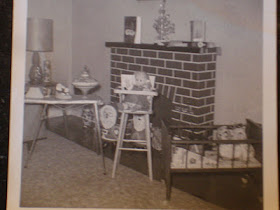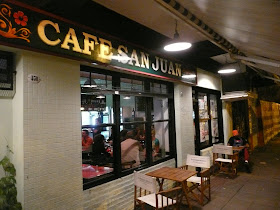My father really enjoyed the season. Papa Testa made the holiday special and meaningful to me as a child. I remember we lived in the city of Somerville, Massachusetts, and we did not have a fireplace. Every year my father would assemble the faux fireplace. My father insisted that Santa would be able to visit us with this makeshift fireplace. My mother would assist me in writing a letter to Santa Claus letting him know that I was "a good boy", and in the letter there would be a short list of Christmas wishes....
(Somerville, MA mid 1960's)
Every Christmas eve my mother would bake sugar cookies, The shapes were always the same: Christmas tree, bell and star. The frosting was white and there was always sprinkles of red and green. The cookies were always left out the coffee table near the Christmas tree with a glass of milk AND, a carrot for Rudolph.
Every Christmas morning my father would be first to awake and he would always say "Good bye Santa Claus, Good bye Santa" We would rush down the stairs, amazed that we missed him. Upon coming down the stairs, I was always in awe to see how the living room was transformed into a magical world of toys and presents. Christmas morning was spent opening presents, as my parents sipped their coffee and watched the smiles on their children grow wide.
(Christmas Card from 1963)
As I got older, I realized that Christmas is not about presents, or what you have or what you don't have, but rather its a feeling. A feeling of happiness and joy. When I sit back now and think of my parents, I think of the joy my father had in shopping for presents. His joy in decorating the Christmas tree with the family while "The Chipmunks" Christmas album played on the hifi. And the joy he would get "waving" bye to Santa Claus, knowing his children would wake up, thinking they had just missed the jolly man in the red suit...




























































